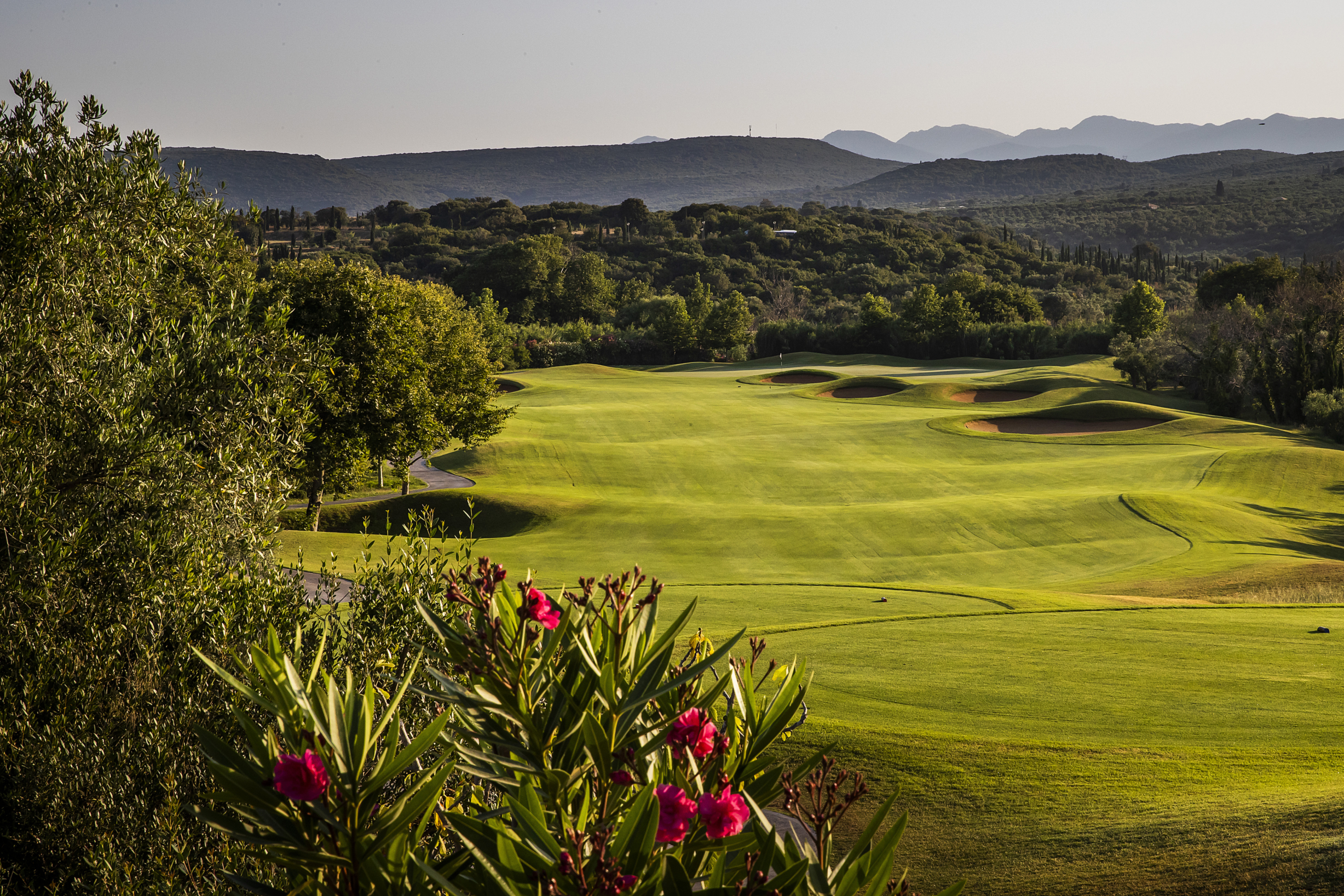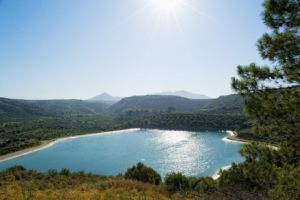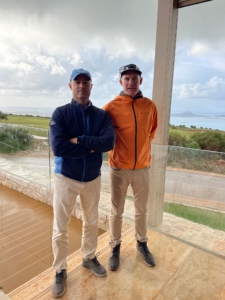Greenkeeping with minimal input for top quality
“We focus on achieving high standards with as little use of resources as possible.” When Simon Doyle, vice president of agronomy at Troon International, talks about greenkeeping at Costa Navarino Destination ‘s four courses, it’s all about details. To the average golfer, each of the four courses – Dunes, Bay, Hills and Olympic – may initially look the same in terms of maintenance and grasses. But things are different for Doyle and the greenkeeping team led by Superintendent Nuno Morgado. “Dunes is the beast and the hardest to maintain,” he says. “Each of the four courses is a little different”.
Increasingly critical issue of water supply
The greenkeeping team at the golf destination, which has already caught up with top destinations in Europe such as Spain and Portugal, does not have many resources at its disposal. “We did a budget comparison with the top 100 golf courses in Europe,” Doyle summarizes. Attention to detail and anticipation of needs is an important part of presenting great golf course conditions.
The developers had the foresight to consider the increasingly critical issue of water supply when they were first planning ahead for Costa Navarino. “The Dunes Course, for example, is partly irrigated with water from the waste-water treatment plant located within the resort, which has gone through the appropriate treatment and complies with strict quality standards. In addition, there are three reservoirs within the distinct resort areas of the destination, with a total capacity of 1,180,000m³. The reservoirs are filled during the winter months by utilizing only a very small percentage (approximately 2%) of the excess runoff from the local rivers. This water, together with the highly treated recycled water from the wastewater treatment plant, is more than enough to cover the irrigation needs for the whole season. Combined with the use of wetting agents and an acid injection system, “we can ensure we get the most of the available water.” The acid injection in particular is a success, it means we need a lot less fertilizer, and the soil structure is improved.”
Anyone who talks to Doyle quickly realizes that greenkeeping at this level is more science than craft. Ongoing soil and water testing is standard. “Nuno and his team don’t do anything blindly, but everything is based on solid principles and sound decisions, which saves a lot of money while ensuring that needs are met. Ultimately, Doyle says, it comes down to applying the nutrients needed in the exact amount that meets the needs of the grass and the soil. “It doesn’t do much good to spend a lot of money on a high-quality product if it doesn’t meet your needs. Making the right choice requires some planning, of course, but it saves money in the end and increases quality.
In addition, there is a willingness to change. When Costa Navarino Destination opened, the development of wild rough with site-specific grasses was not yet an issue in international golf. Instead, the mantra of the mowed-through and fully irrigated course prevailed. Since then, things have changed considerably: “We’ve removed sprinklers from the rough, and natural grasses have taken hold here and are now being further encouraged.” But even that, Doyle says, is not yet 100 percent satisfactory. “Ultimately, we’re looking for grasses that will also play well when the golfer lands there…” Tests are currently being conducted with buffalograss and other native grasses that Doyle hopes will catch on. If the tests are successful, a combination of improved quality and further water savings may be achieved.
Minimum Levels of Sufficient Input
On an area of 130 hectares of manicured lawns on the four golf courses, there is a new challenge every day anyway. In 2022, 75,000 rounds were played, and this high demand combined with increasing weather challenges and high energy prices requires a great deal of creativity and innovation. “The good thing about it is the technology is constantly improving,” Doyle sums up. “We now have many more ways to measure and verify the use of materials. Ultimately, this leads to even more goal orientation. Attention to detail means conserving resources while keeping costs in check. If you want to work economically and achieve high quality at the same time, Doyle concludes, there’s no getting around this approach in golf course operations today. We call it Minimum Levels of Sufficient Input (MLSI).









 Golf Sustainable
Golf Sustainable